26 de noviembre 2020

Nicaragua: Public Employees Hindered from Traveling to USA

PUBLICIDAD 1M
PUBLICIDAD 4D
PUBLICIDAD 5D
The passage of Iota through this department left dozens of homes destroyed and hundreds of evacuees in churches and temples
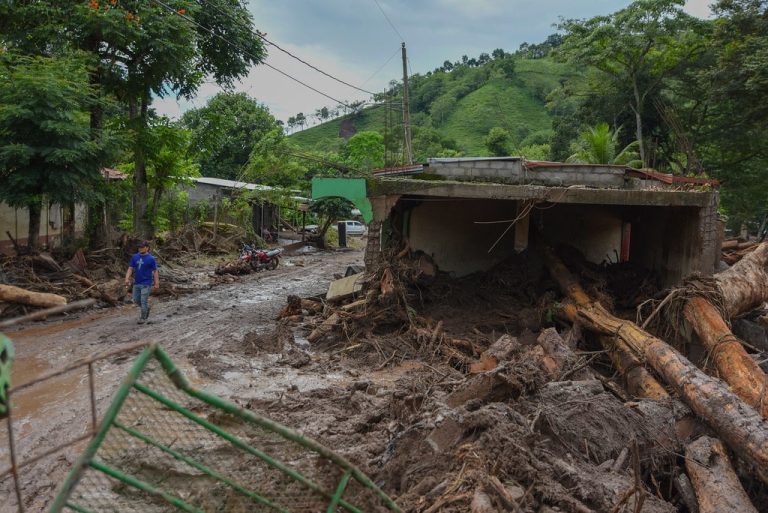
The passage of Iota through Jinotega left dozens of homes destroyed and hundreds of evacuees in Catholic churches and evangelical temples
After the passage of Hurricane Iota, between the mud and debris left by landslides and flooding of rivers, there is a hidden reality in the mountains of Jinotega: dozens of destroyed homes and hundreds of evacuees in Catholic churches and evangelical temples.
According to the regime, 18 Nicaraguans died during the passage of Iota in Matagalpa, Carazo, and Nueva Segovia; three deaths have been reported in Wiwilí, Jinotega: Carlos and Francisco Carazo, father and son, respectively - in the El Jilguero community - and Carlos José López Méndez, in the El Diamante community. However, official statistics do not yet reveal the number of victims of the hurricane in Jinotega.
In an interview on the Esta Noche program, Monsignor Carlos Enríque Herrera, bishop of Jinotega and president of Cáritas Nicaragua, lamented the “strong blow” that is being felt in that department, where the most affected areas have been: San José de Bocay, Santa María de Pantasma and Wiwilí, he said.
Óscar Gadea, Mayor of Santa María de Pantasma, revealed that in order to attend to those evacuated by the hurricane he had to buy products on credit, including basic grains from businesses in the municipality. He, along with other opposition mayors, have denounced that the Ortega regime left them "alone" in the preparation for the hurricane and the attention to victims of Iota.
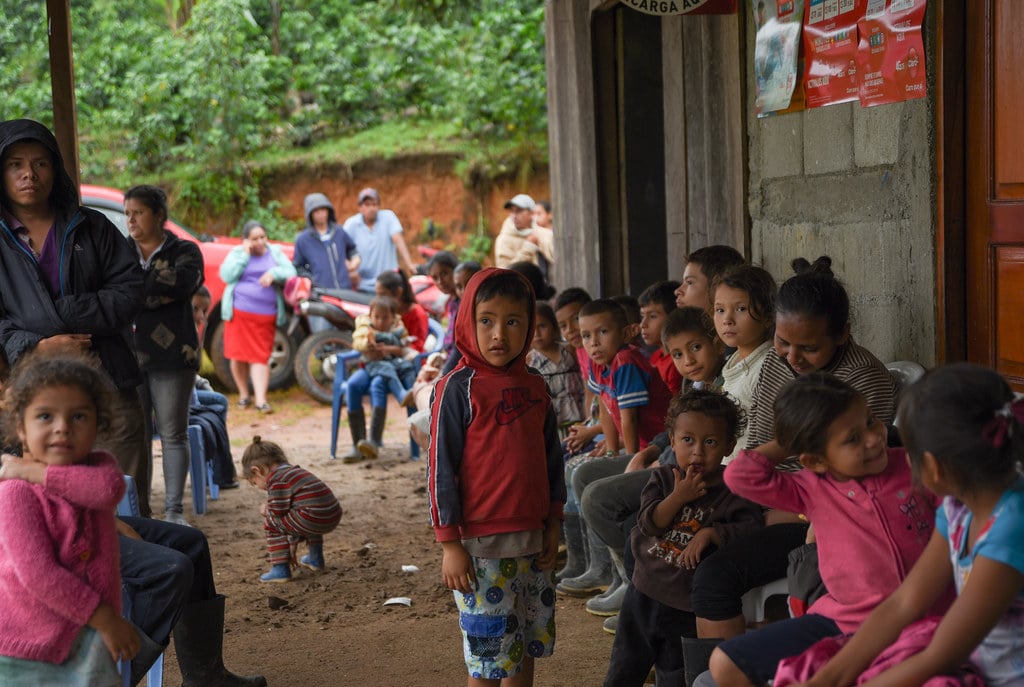
More than 40 people living in risk areas have been sheltered in an evangelical church after they were evicted from the town's public school. Photo: Nayira Valenzuela | Confidencial
In Santa María de Pantasma, the pastor of the Nueva Esperanza temple, Josué Magdaleno Rivera, opened the building to welcome more than 40 people, mostly children, who were evicted from the school in the Loma Alta community, with the excuse that classes "should resume."
These citizens self-evacuated and came to school with nothing but the clothes they were wearing, their belongings left under the mud that entered their houses when Iota was passing through the area. Since last Monday, November 17, they have been sleeping on tables or on the floor of the school, and now in the temple.
In the midst of despair, the only distraction for the children has been a dog that allows everyone to pet her, while the adults, from the corridor of the temple, debate between returning to their homes - despite the danger - or staying in the shelter, although that means more time in precarious conditions.
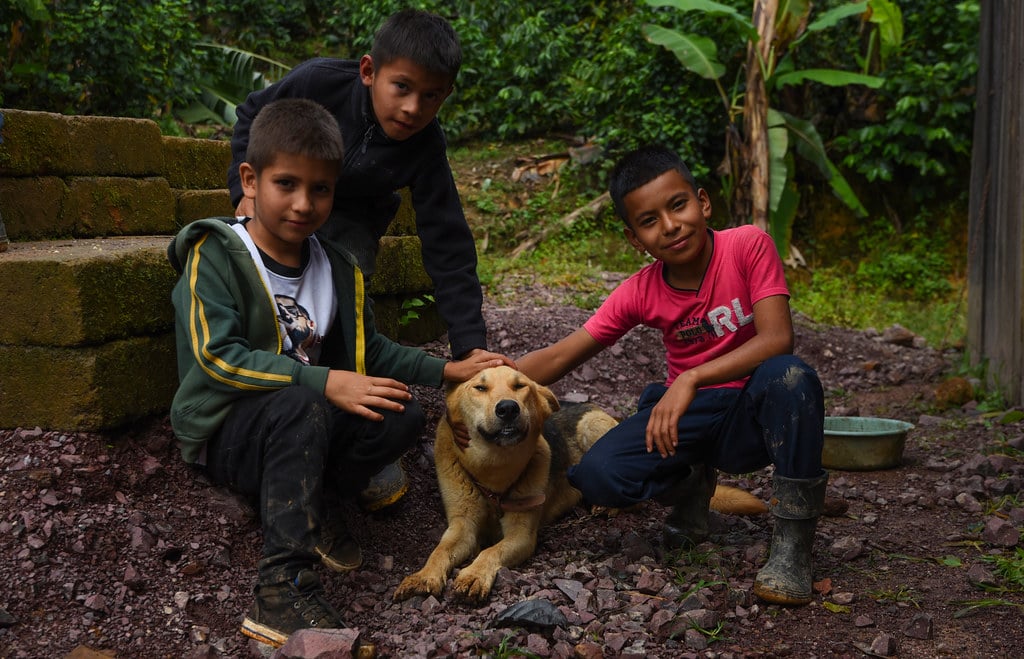
There are more than twenty children in the temple’s shelter. They left their toys at their homes, and their only distraction has been playing with the church dog. Photo: Nayira Valenzuela | Confidencial
Sonia Herrera arrived at the makeshift shelter with her three children. The roof of her house was torn off by strong winds and the water currents damaged all her belongings. Her biggest concern is the health of her 11-year-old son, who suffers from colon cancer and needs special nutrition and diapers.
In the Maleconcito community, Wiwilí, the inhabitants were taken by surprise by a flood in the El Malecón stream, giving them only a few moments to grab some of their belongings. In a matter of minutes, the flood had washed away everything: huge tree trunks passed through some houses, while others were flooded by hundreds of cubic meters of mud and river residue. It was the first time something like this had happened to them.
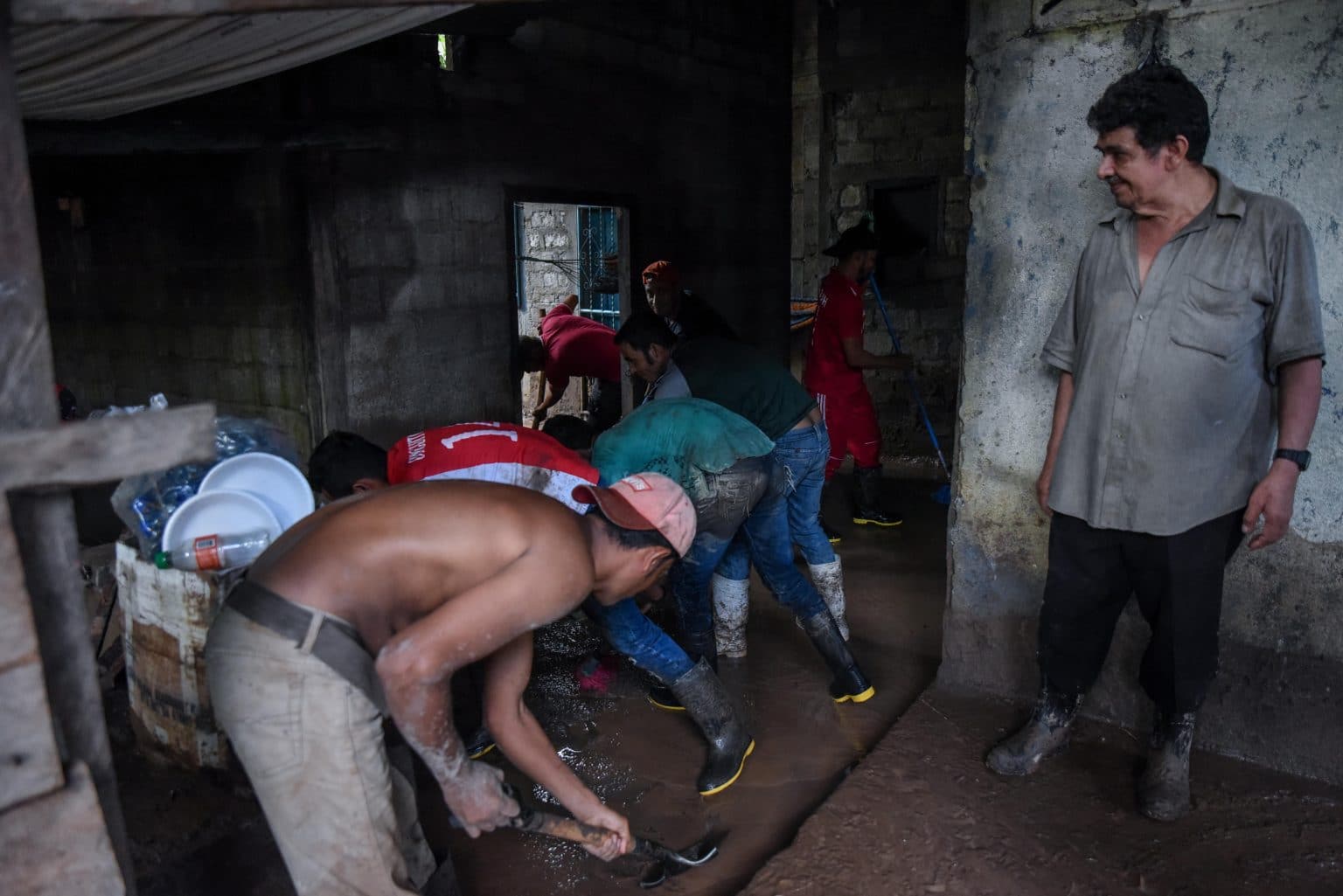
The youngest members of the Maleconcito community have organized brigades to help remove mud from their neighbors' houses. Photo: Nayira Valenzuela | Confidencial
In the face of the lack of support from the municipal mayor's office or the Government, the youngest in the community have organized brigades to remove the mud and recover the belongings of their neighbors.
In Pedro Pablo Herrera's house, where one of the town's distributors operated, about 10 men with shovels in hand and another three holding a hose that brought water from the river, could barely get the mud out of the living room after working an entire morning.
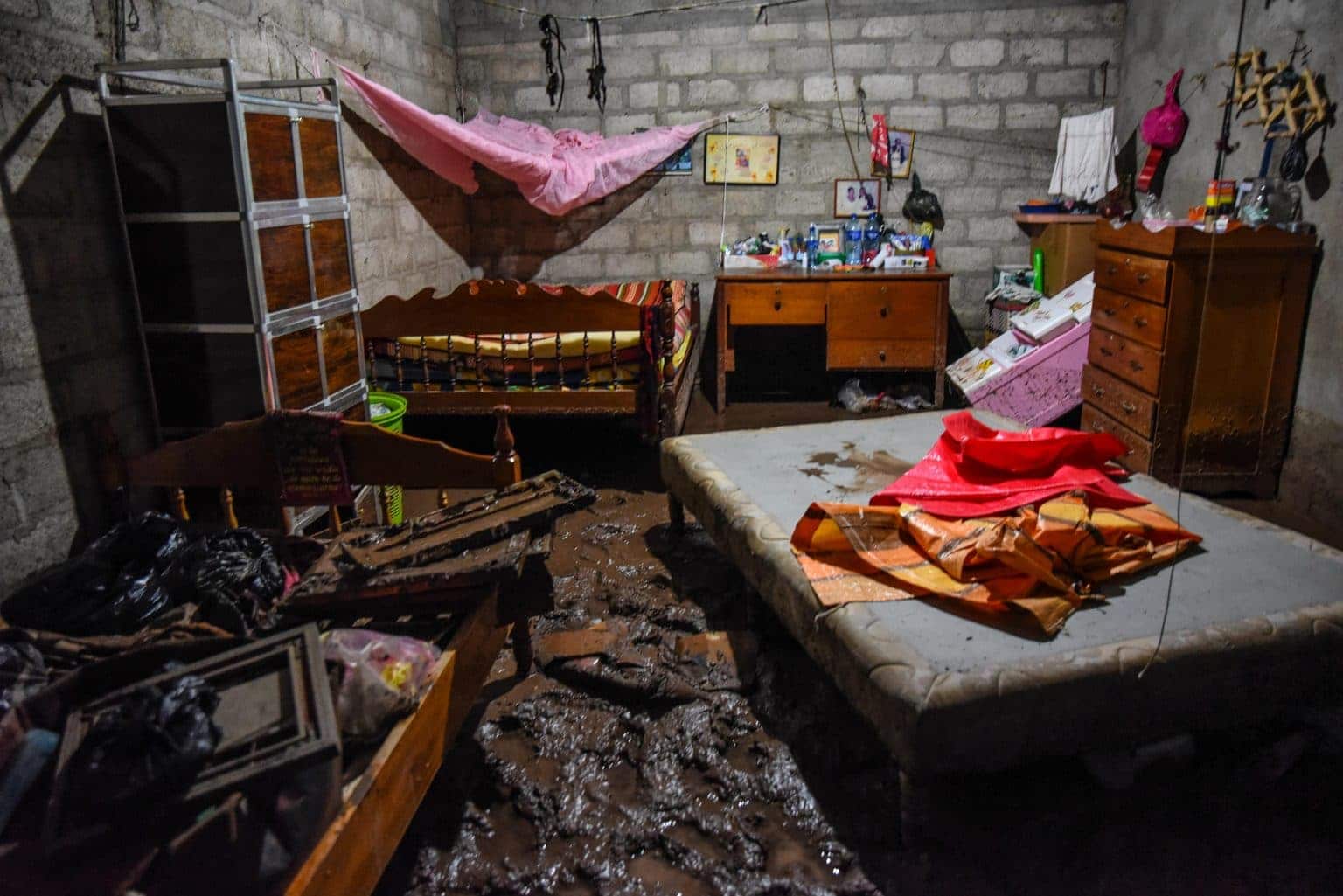
In the Maleconcito community, with the rise of the El Malecón stream, water and mud flooded the houses. Photo: Nayira Valenzuela | Confidencial
The reality is the same in all the houses on the edge of this ravine, as is the case of Eliezer Méndez, who picks up the boards of what was his house. He recalls that he and his family are "miraculously alive" because no one was at home when the flood happened. He was running an errand and his wife was at church; on their piece of land, there are only a few boards left on the ground.
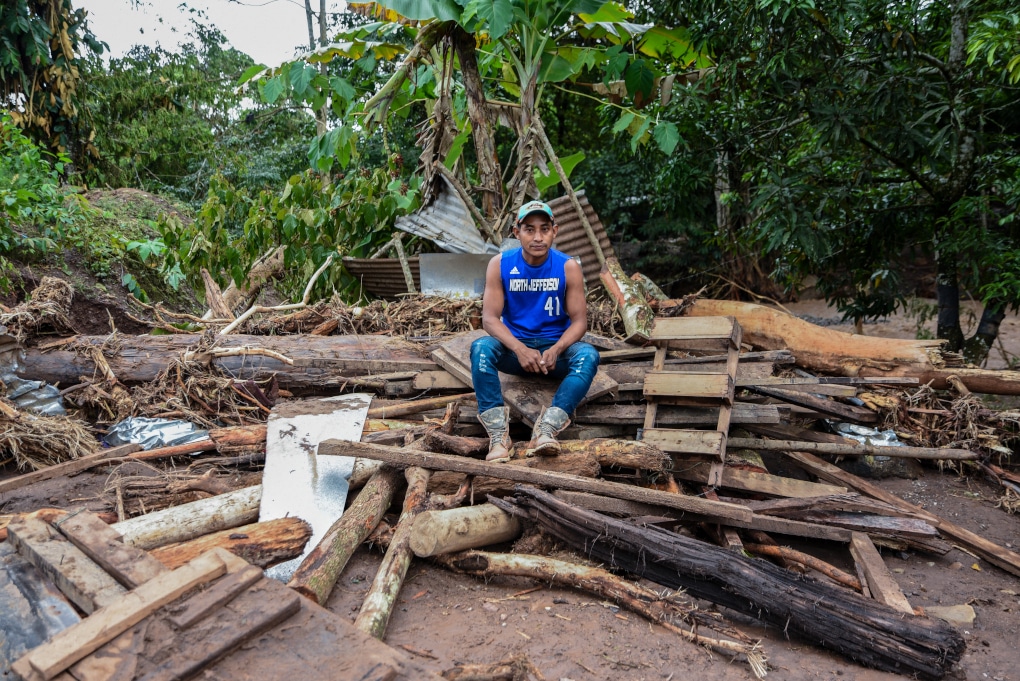
Eliezer Méndez poses on the rubble of the house where he lived with his wife and children, when the flood occurred no one was in the house. Photo: Nayira Valenzuela | Confidencial
About ten kilometers east of Maleconcito, on the mountain, in the San José de Kilambé community, José Luis Hernández Castro inspects what little he has left of his home. "I am trying to recover some metal that I had in the house”, the small coffee producer commented, while three men with shovels dig into a thick layer of mud.
Of 60 homes on the hill, 15 were completely destroyed by an avalanche. Access to Hernández's house is complicated, hundreds of logs are mixed with stones of different sizes and boards from the houses. The mud is deceptive, at any moment it gives way, and the walker sinks to the knee.
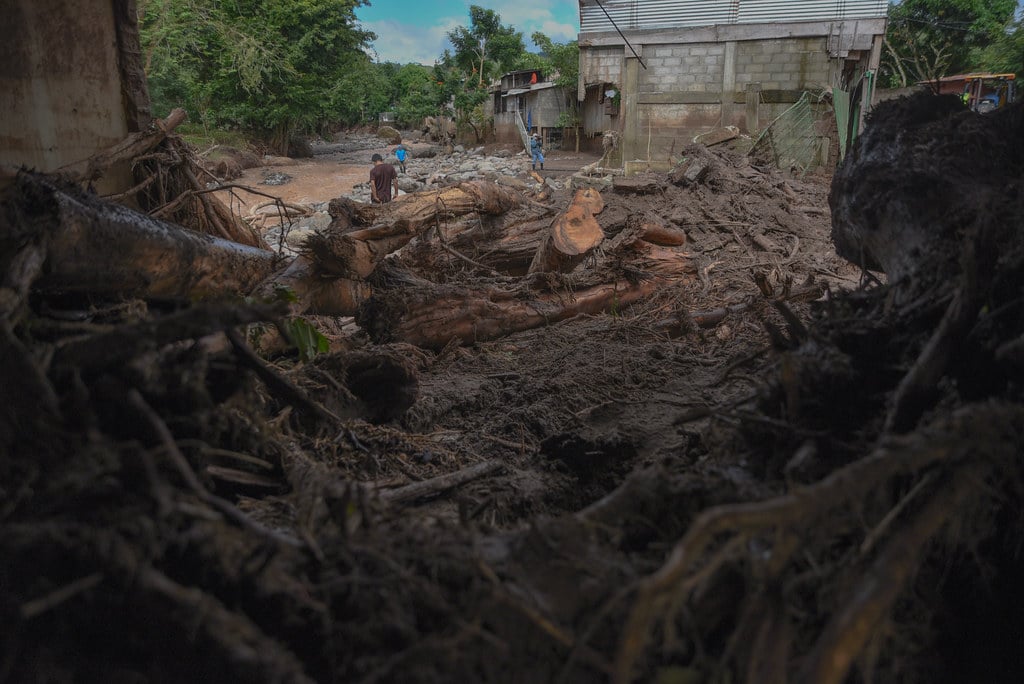
Of the 60 houses in the San José de Kilambé community, 15 of them were totally or partially damaged by a landslide. Photo: Nayira Valenzuela | Confidencial
The inhabitants of this community were evacuated by the Army hours before the landslide, which occurred on the morning of Tuesday, November 17. The victims are at their relatives’ houses or at evangelical churches. In the community there is no electricity, no drinking water and those who have decided to return to the mountains have had to put up a net "to clean" the water that runs through a stream.
This article has been translated by Ana Maria Sampson, a Communication Science student at the University of Amsterdam and member of our staff*
Archivado como:
PUBLICIDAD 3M
Confidencial es un diario digital nicaragüense, de formato multimedia, fundado por Carlos F. Chamorro en junio de 1996.
PUBLICIDAD 3D